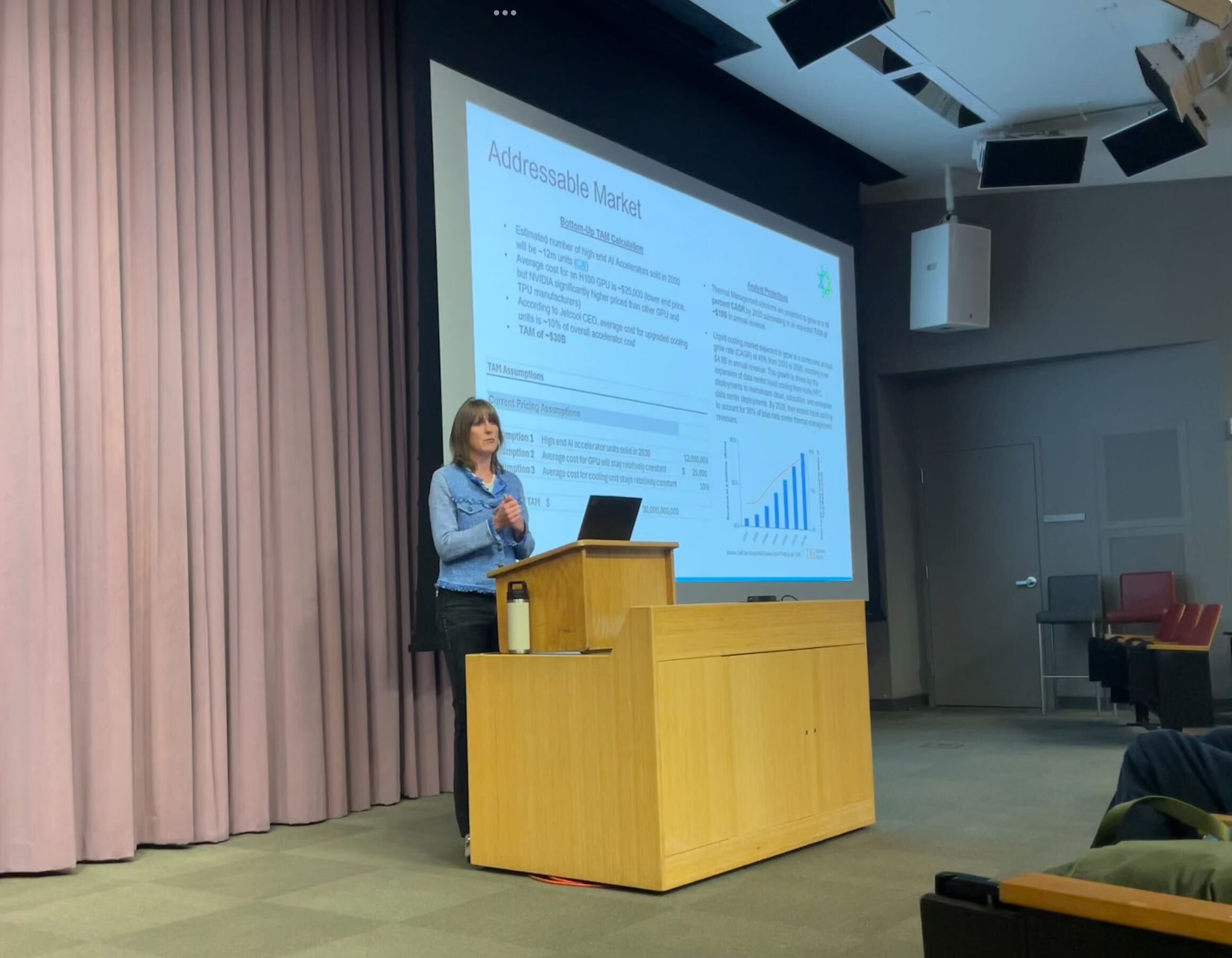Novo Nordisk offers diabetes drug Ozempic for less than half the price for cash-paying U.S. patients – CNBC

Report on Pharmaceutical Pricing Strategy and its Alignment with Sustainable Development Goals
Introduction: Addressing Healthcare Affordability and SDG Alignment
A recent initiative by pharmaceutical company Novo Nordisk to significantly reduce the price of its diabetes medication, Ozempic, for cash-paying patients in the United States directly addresses key targets within the Sustainable Development Goals (SDGs). This report analyzes the pricing strategy in the context of SDG 3 (Good Health and Well-being), SDG 10 (Reduced Inequalities), and SDG 17 (Partnerships for the Goals).
Strategic Price Reduction and Enhanced Accessibility
In response to political pressure and public concern over high medication costs, Novo Nordisk has implemented a new pricing model for Ozempic. The list price for the medication is approximately $1,350 per month.
- The new cash price for eligible patients is $499 per month.
- This offer applies to three different dose sizes of the weekly injection.
- Access to the reduced price is available through multiple platforms, including the official Ozempic website, Novo Nordisk’s patient assistance program, and a direct-to-consumer online pharmacy.
Contribution to SDG 3: Good Health and Well-being
The price reduction is a significant step toward achieving universal health coverage and combating non-communicable diseases, central tenets of SDG 3.
- Target 3.4 (Non-Communicable Diseases): By making Ozempic more affordable, the initiative improves access to essential treatment for Type 2 diabetes, a prevalent non-communicable disease. This helps patients manage their condition effectively, contributing to the reduction of premature mortality.
- Target 3.8 (Universal Health Coverage): The program directly addresses financial barriers to healthcare for individuals without adequate insurance coverage. Lowering the out-of-pocket cost for a vital medicine is a practical measure to enhance access to quality essential healthcare services.
- Patient Safety: The strategy aims to steer patients away from unregulated and potentially unsafe compounded copycat drugs by providing a more affordable, branded, and approved alternative.
Fostering Partnerships and Reducing Inequalities (SDG 17 & SDG 10)
The initiative exemplifies a multi-stakeholder approach to solving complex health challenges, aligning with SDG 17, and works to mitigate health disparities, a core objective of SDG 10.
- SDG 17 (Partnerships for the Goals): Novo Nordisk has collaborated with the drug savings company GoodRx to make the $499 monthly price available at over 70,000 pharmacies nationwide. This public-private partnership leverages existing infrastructure to broaden the reach of the affordability program.
- SDG 10 (Reduced Inequalities): High drug costs disproportionately affect uninsured and underinsured populations, creating significant inequality in health outcomes. By substantially lowering the price for cash-paying patients, the program reduces the economic disparity in accessing critical medical treatment.
Market Context and Broader Implications
This pricing adjustment occurs within a competitive market for GLP-1 medications, with competitor Eli Lilly also implementing price reductions for similar drugs. The strategy serves a dual purpose: expanding patient access in alignment with global health goals while simultaneously reinforcing market position against both direct competitors and the proliferation of unapproved alternatives. The move reflects a growing trend of pharmaceutical companies responding to calls for greater price transparency and affordability in the U.S. market.
Analysis of Sustainable Development Goals (SDGs) in the Article
1. Which SDGs are addressed or connected to the issues highlighted in the article?
-
SDG 3: Good Health and Well-being
The article directly addresses health by focusing on Ozempic, a treatment for Type 2 diabetes, which is a major non-communicable disease. The entire discussion revolves around making this essential medication more accessible and affordable, which is central to ensuring healthy lives and promoting well-being for all ages.
-
SDG 10: Reduced Inequalities
The article highlights the inequality in access to essential medicine based on economic status and insurance coverage. By offering a lower cash price, Novo Nordisk’s initiative aims to reduce the financial barrier for “cash-paying U.S. patients” and those who “lack adequate insurance coverage,” thereby addressing economic inequalities in healthcare access.
2. What specific targets under those SDGs can be identified based on the article’s content?
-
Target 3.4: Reduce by one-third premature mortality from non-communicable diseases.
The article focuses on Ozempic, a treatment for Type 2 diabetes. By making this treatment more affordable, the initiative helps more patients manage their condition effectively. Better management of diabetes is crucial for preventing complications and premature mortality associated with this non-communicable disease.
-
Target 3.8: Achieve universal health coverage, including financial risk protection, access to quality essential health-care services and access to safe, effective, quality and affordable essential medicines and vaccines for all.
This target is central to the article. The initiative to lower the price of Ozempic from nearly “$1,350 per month” to “$499 in cash per month” directly addresses the affordability of essential medicines. The article explicitly states the goal is to “expand access to eligible Type 2 diabetes patients who don’t have insurance coverage,” which aligns with providing financial risk protection and ensuring access for all.
-
Target 10.2: By 2030, empower and promote the social, economic and political inclusion of all, irrespective of… economic or other status.
The high list price of medication creates a system where access is dependent on economic status and insurance. The price reduction initiative is a step towards greater economic inclusion in healthcare, ensuring that patients who have to pay out-of-pocket are not excluded from accessing necessary treatments due to prohibitive costs.
3. Are there any indicators mentioned or implied in the article that can be used to measure progress towards the identified targets?
-
Indicator for Target 3.8: Proportion of population with access to affordable essential medicines.
The article provides concrete data points that can serve as indicators for measuring progress:
- Price Reduction: The monthly price for cash-paying patients is reduced from a list price of “almost $1,350” to a new price of “$499.” This specific price drop is a direct measure of increased affordability.
- Expanded Pharmacy Access: The collaboration with GoodRx makes the discounted price available at “more than 70,000 pharmacies nationwide,” indicating the scale and reach of the access improvement.
- Target Population: The initiative specifically targets “cash-paying U.S. patients” and those who “lack adequate insurance coverage.” The number of patients from this group who utilize the new price would be a key performance indicator of its success in expanding access.
4. Table of SDGs, Targets, and Indicators
| SDGs | Targets | Indicators |
|---|---|---|
| SDG 3: Good Health and Well-being | Target 3.4: Reduce premature mortality from non-communicable diseases. | Increased access to and affordability of Type 2 diabetes treatment (Ozempic) for better disease management. |
| Target 3.8: Achieve universal health coverage and access to affordable essential medicines. |
|
|
| SDG 10: Reduced Inequalities | Target 10.2: Promote social and economic inclusion of all. | Reduction of financial barriers to essential medicine for patients with limited or no insurance coverage, promoting greater economic inclusion in healthcare. |
Source: cnbc.com

What is Your Reaction?
 Like
0
Like
0
 Dislike
0
Dislike
0
 Love
0
Love
0
 Funny
0
Funny
0
 Angry
0
Angry
0
 Sad
0
Sad
0
 Wow
0
Wow
0

















































:focal(1500,1000)/https://media.globalcitizen.org/a6/9a/a69a4720-d8a1-4715-b596-18738d03c05c/rotary_polio_hero_image.jpg?#)






/countries/sri-lanka/photo-credit---dmc-sri-lanka.tmb-1200v.jpg?sfvrsn=dc298bcc_1#)
















